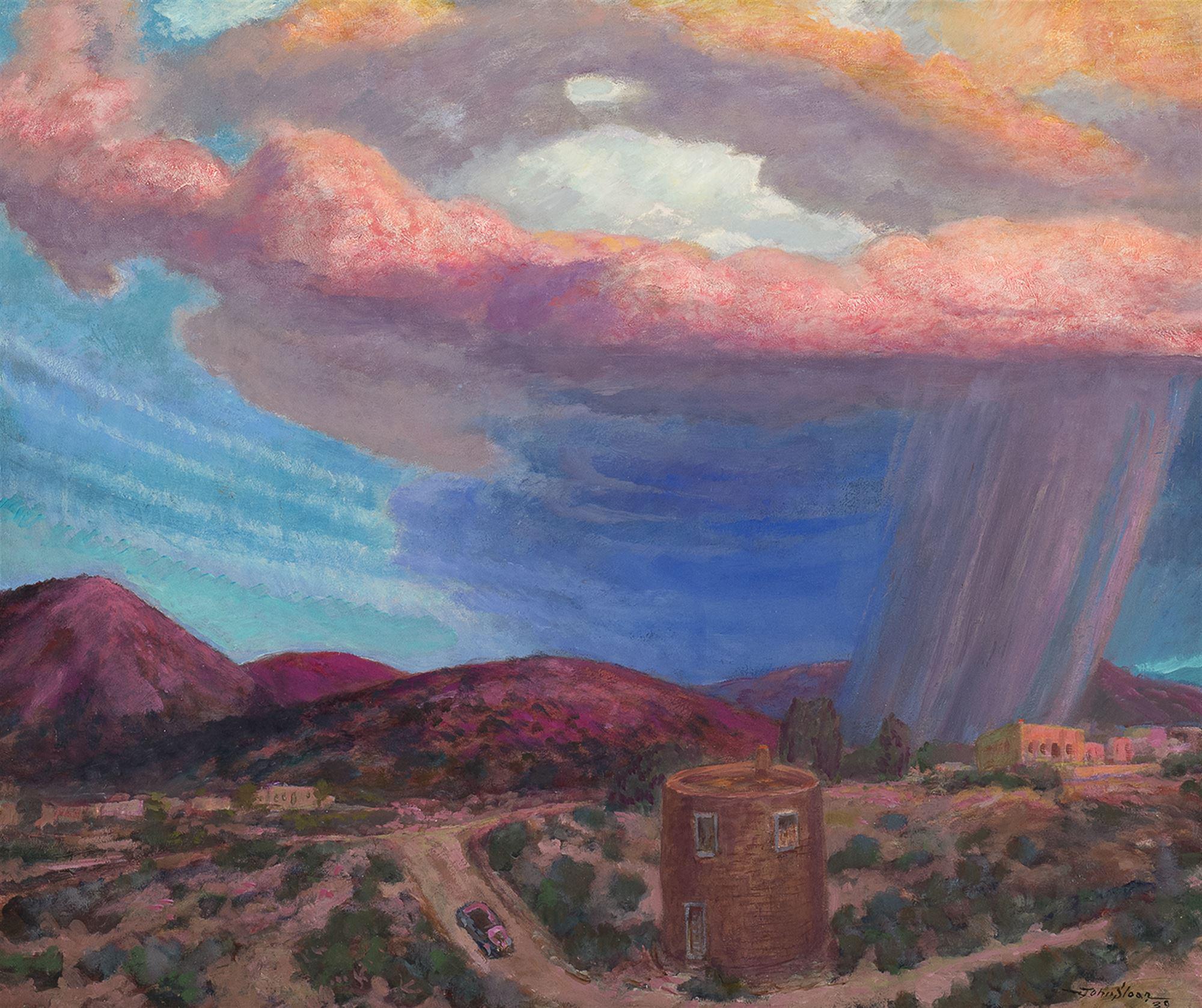In 1919, on the advice of Robert Henri, Sloan began visiting Santa Fe on a regular basis. Although it consisted of fewer than 6,000 residents at the time, Santa Fe became a second home to Sloan and his wife Dolly. Adjusting to Southwestern life would affect Sloan much like his move to New York, fifteen years earlier. He was invigorated by the fresh sights and bustling cultural activity, both of his fellow artists and the native residents. He and Dolly were soon engaged in community affairs while exploring their new home; she helped raise money for the annual fiesta, while he made costumes and floats. In the landscape around him, Sloan found the “plastic realization” of form that he had glimpsed in the European work at the 1913 Armory Show in New York. On painting Santa Fe, Sloan said: “I like to paint the landscape of the Southwest because of the fine geometric formations and handsome color. Study of the desert forms, so severe and so clear in that atmosphere, helped me to work out principles of plastic design. Because the air is so clear you feel the reality of things in the distance.”
Autumn, Sun on the Range depicts a scene in the Sangre de Christo Mountains, east of Santa Fe. The building to the lower right appears to be a mine in a rural settlement. Sloan’s paintings were inspired by thirty summers in Santa Fe and played a pivotal role in the cultural growth of the town, both by promoting Southwestern art on the East Coast and influencing early exhibition policies at the Museum of New Mexico.






